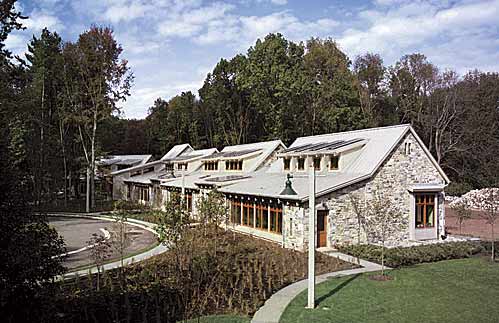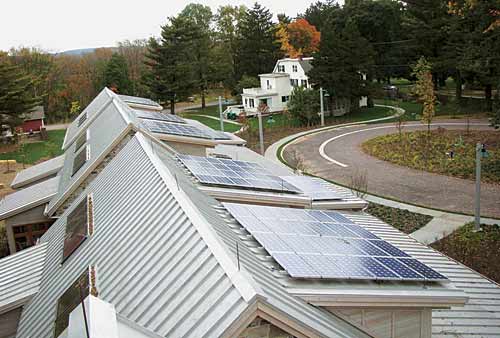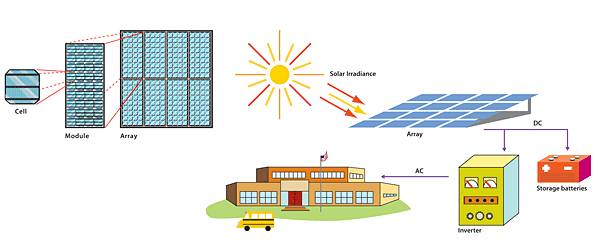Sunpower for School Kids
Where Does the Energy Go?
PV systems are either stand-alone or grid-connected. The electricity from a stand-alone system is either used as it is produced or stored in batteries. In grid-connected systems, power generated by the array is used to supplement power supplied by the electric utility. When the modules don't provide enough electricity, the utility supplements the array. When the modules provide more than is needed, the excess is fed back into the power grid and the school's electric meter runs backwards. In these situations-in the 35 states that allow it-the school sells electricity back to the utility. This can be particularly important during "peak" periods of energy demand, when the utilities charge higher rates. These periods often coincide with times when the output from the PV array is also at its highest. If the school is getting maximum energy from its array at these times, it is buying less of the expensive "peak" energy from the utility. For most schools, a grid-connected system makes the most sense, especially (as is usually the case) when the PV array is not large enough to meet all the electricity needs of the facility. In special circumstances-for example, when a school is a designated place of refuge during emergencies-batteries can be added to a grid-connected system to store electricity when the utility grid is down.
|
PV on-and in-the Architecture
The most common application of photovoltaic systems in buildings is the one we're most familiar with: an array mounted on the roof of a facility, facing south and tilted to take maximum advantage of the sun. Because schools typically have large expanses of roof area, such systems make a lot of sense for both new and existing construction, especially for larger arrays.
To mount PV arrays on schools, a number of different approaches can be used. In facilities with sloped roofs that face south (or slightly east or west of south), modules can be attached directly to the sloped roof with rails or some other form of bracket system. In schools with flat roofs, some form of frame system is typically used to hold the modules at the correct angle to maximize sun exposure. Ballasted systems are relatively new. They allow a PV array to simply lie down on the flat roof without the need for mechanical fasteners between the roof and the ballasted modules. This makes installation much simpler and avoids the multiple roof penetrations of a frame system.
|
In new construction, photovoltaic systems can actually be incorporated as substitutes for other building systems, such as roofs, atriums, canopies. Such an approach-referred to as "building integrated photovoltaics" (BIPV)- can result in first-cost savings, since the PV system isn't being added to an existing building component but is simply replacing it. The system can also be financed as part of the entire building, rather than as an "add-on."
While this sounds good in principle, BIPV systems are still relatively rare, especially in the schools market, and high-profile examples like the atrium glazing for the Tiger Woods Learning Center are exceptional.












